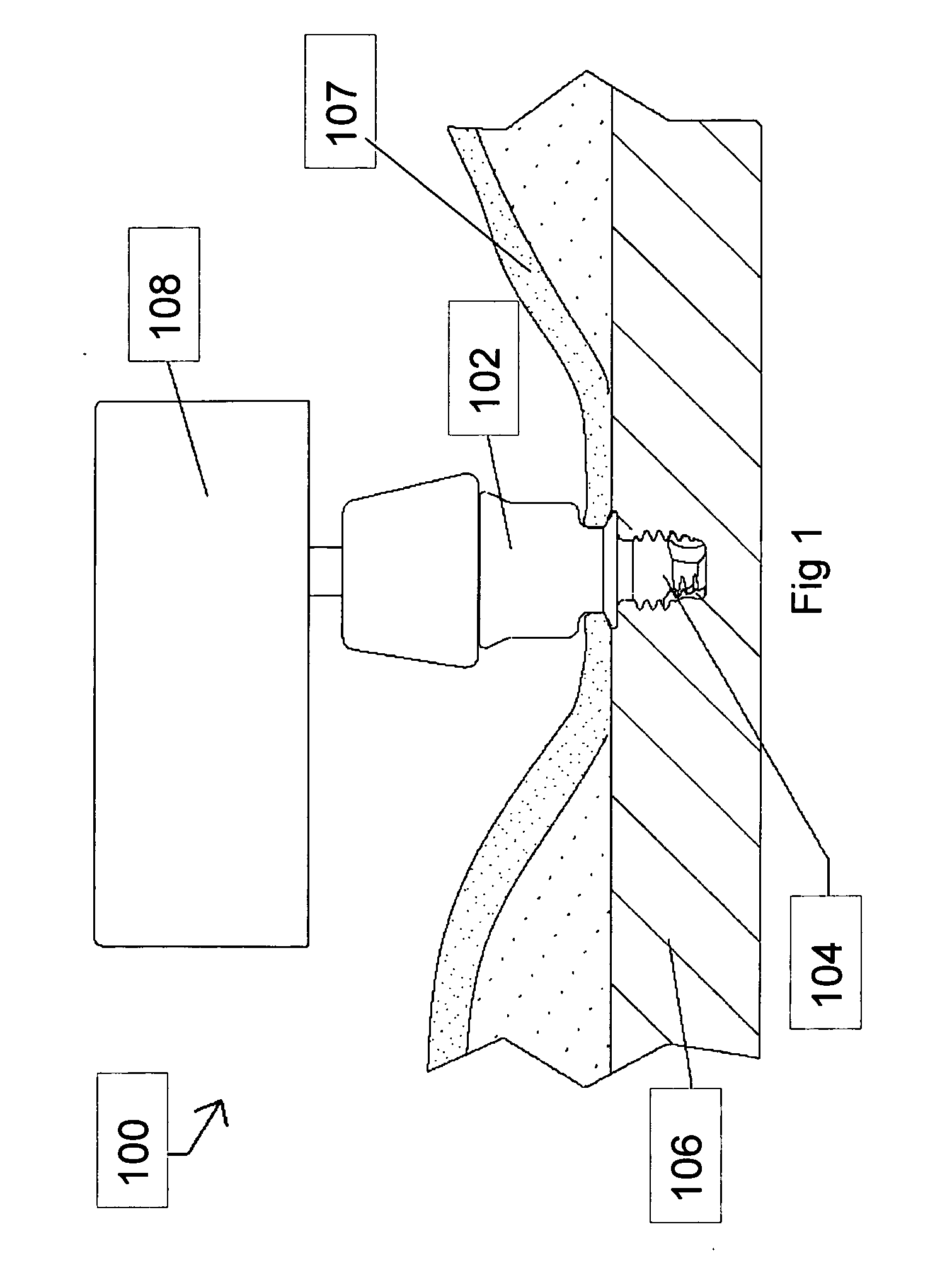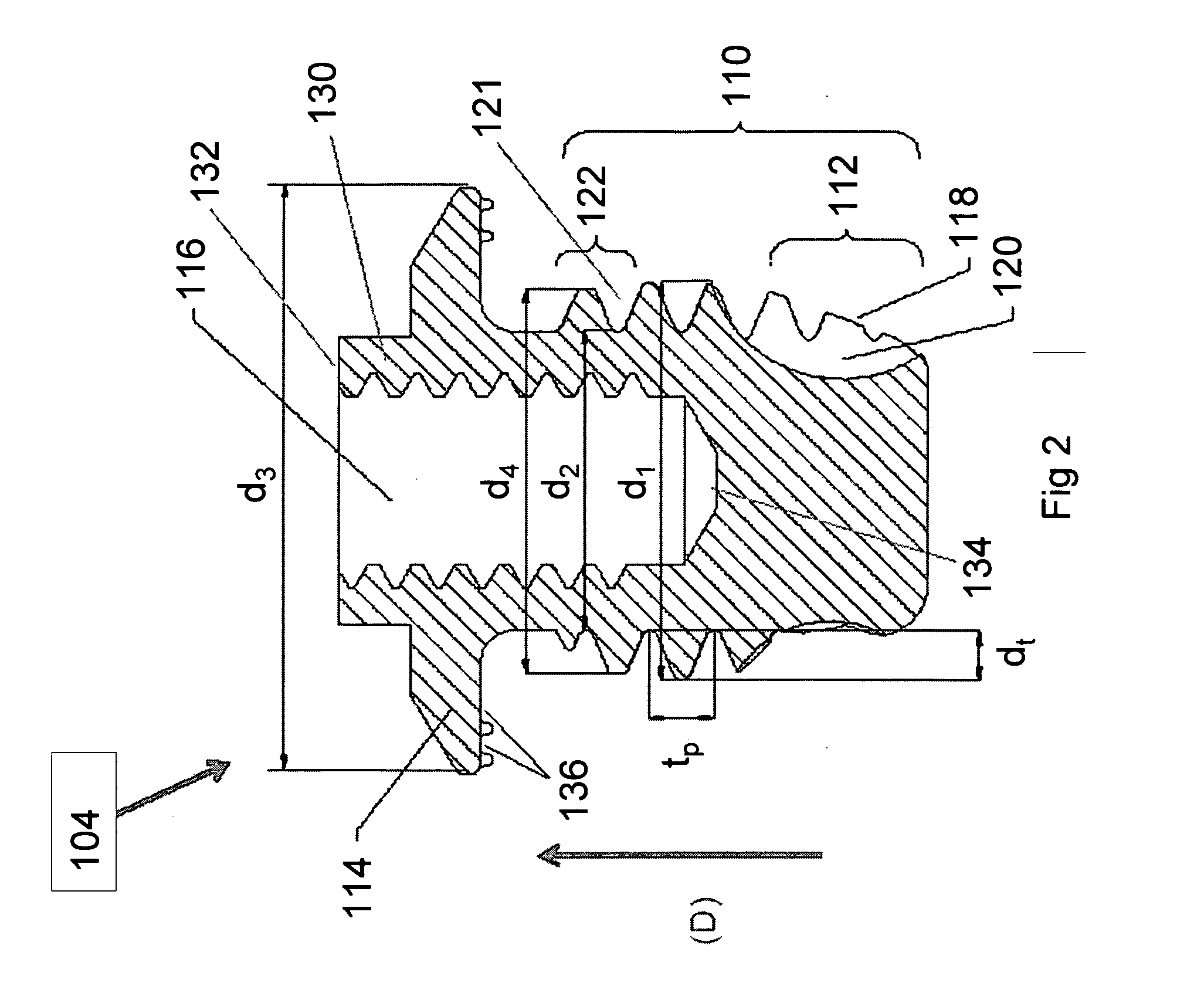Hearing-aid anchoring element
a technology of anchoring element and hearing aid, which is applied in the direction of transducer casing/cabinet/support, electrical transducer, electrical apparatus, etc., can solve the problems of complicated fixture manufacturing procedure, and achieve low bone resorption, high manufacturing cost, and asymmetrical
- Summary
- Abstract
- Description
- Claims
- Application Information
AI Technical Summary
Benefits of technology
Problems solved by technology
Method used
Image
Examples
Embodiment Construction
[0056]FIG. 1 is a side view of an illustrative example of a direct bone conduction hearing aid system 100 that has an abutment 102 with a fixture 104 that is screwed into a skull bone 106 of a user. A hearing-aid device 108 converts sound into vibrations and the vibrations is transferred to the skull bone 106.
[0057]FIG. 2 is a cross-sectional side view and FIG. 4 is a perspective view of a preferred embodiment of the fixture 104. The fixture 104 has a threaded portion 110 having a maximum outer diameter d1 and an inner diameter d2. The thread has a depth dt and a thread pitch tp. The fixture has a conical outer portion 112 to facilitate the insertion of the fixture 104 into a hole in the skull bone 106.
[0058] An upper end of the fixture 104 has a radially outwardly protruding flange 114 with a diameter d3 to prevent the fixture 104 from being pushed into the skull. Preferably, the diameter d3 is greater than the diameter d2. An axial extension 130 has an axial threaded inner hole ...
PUM
 Login to View More
Login to View More Abstract
Description
Claims
Application Information
 Login to View More
Login to View More - R&D
- Intellectual Property
- Life Sciences
- Materials
- Tech Scout
- Unparalleled Data Quality
- Higher Quality Content
- 60% Fewer Hallucinations
Browse by: Latest US Patents, China's latest patents, Technical Efficacy Thesaurus, Application Domain, Technology Topic, Popular Technical Reports.
© 2025 PatSnap. All rights reserved.Legal|Privacy policy|Modern Slavery Act Transparency Statement|Sitemap|About US| Contact US: help@patsnap.com



